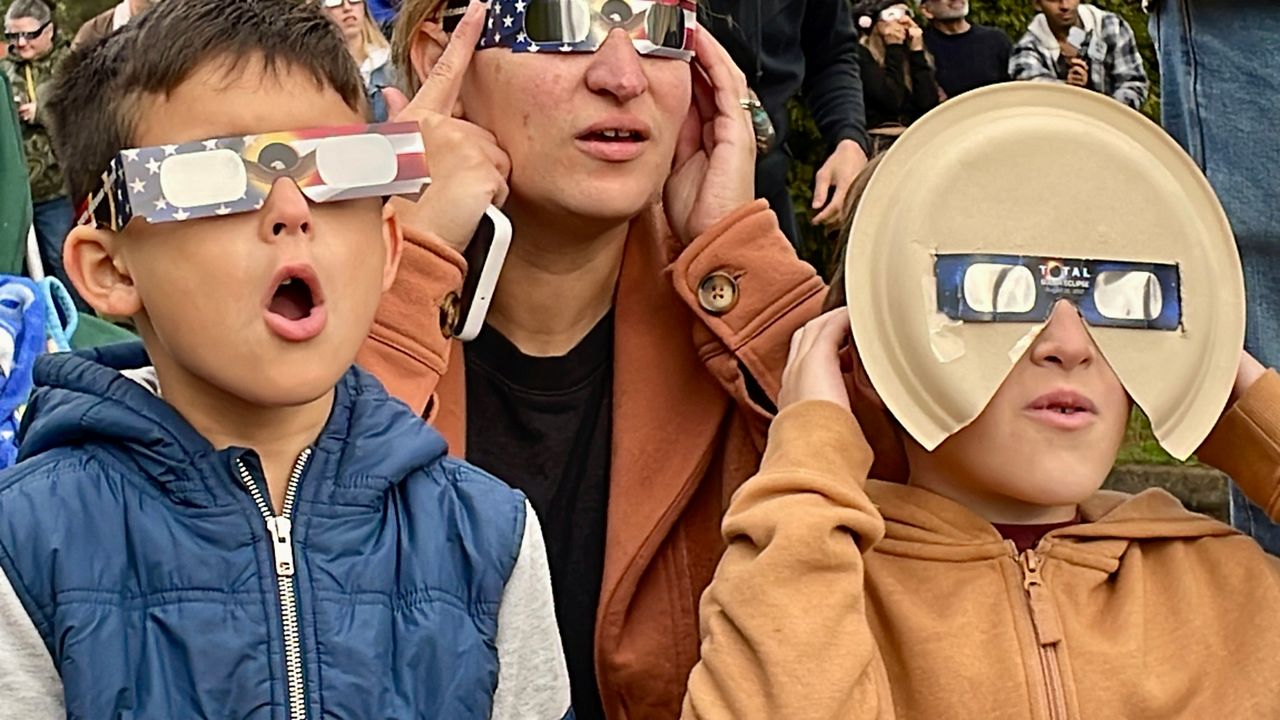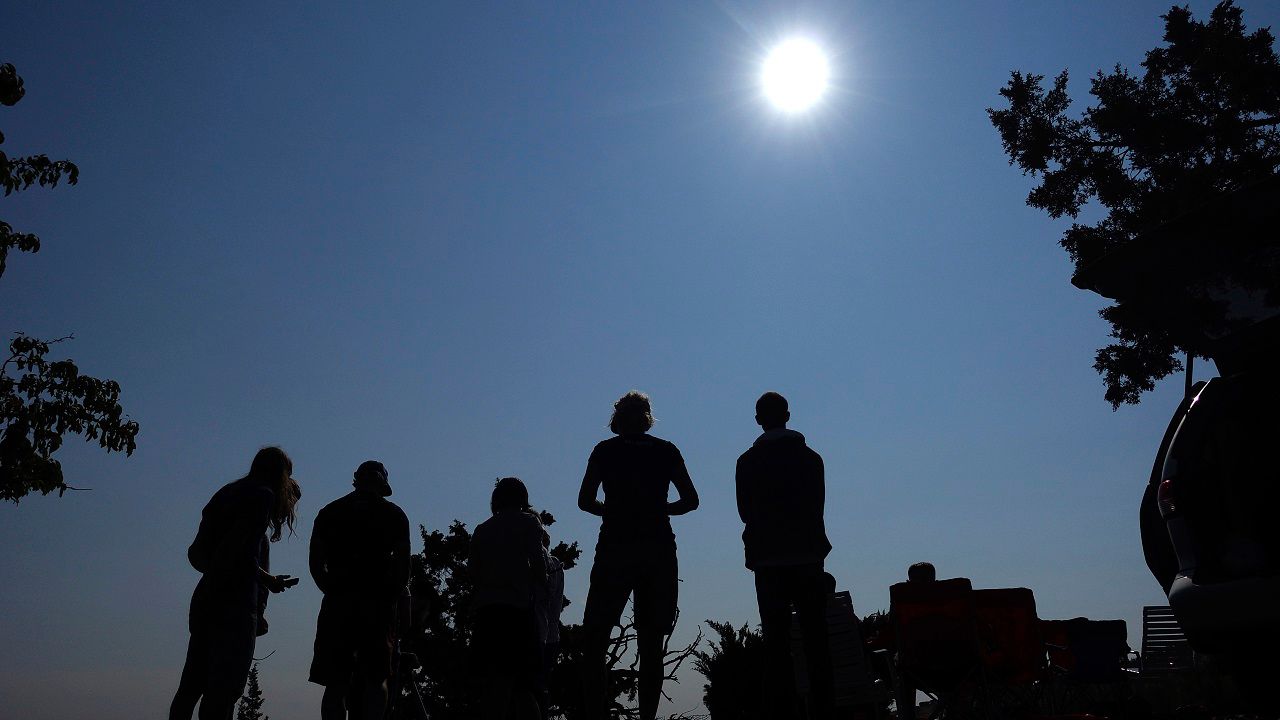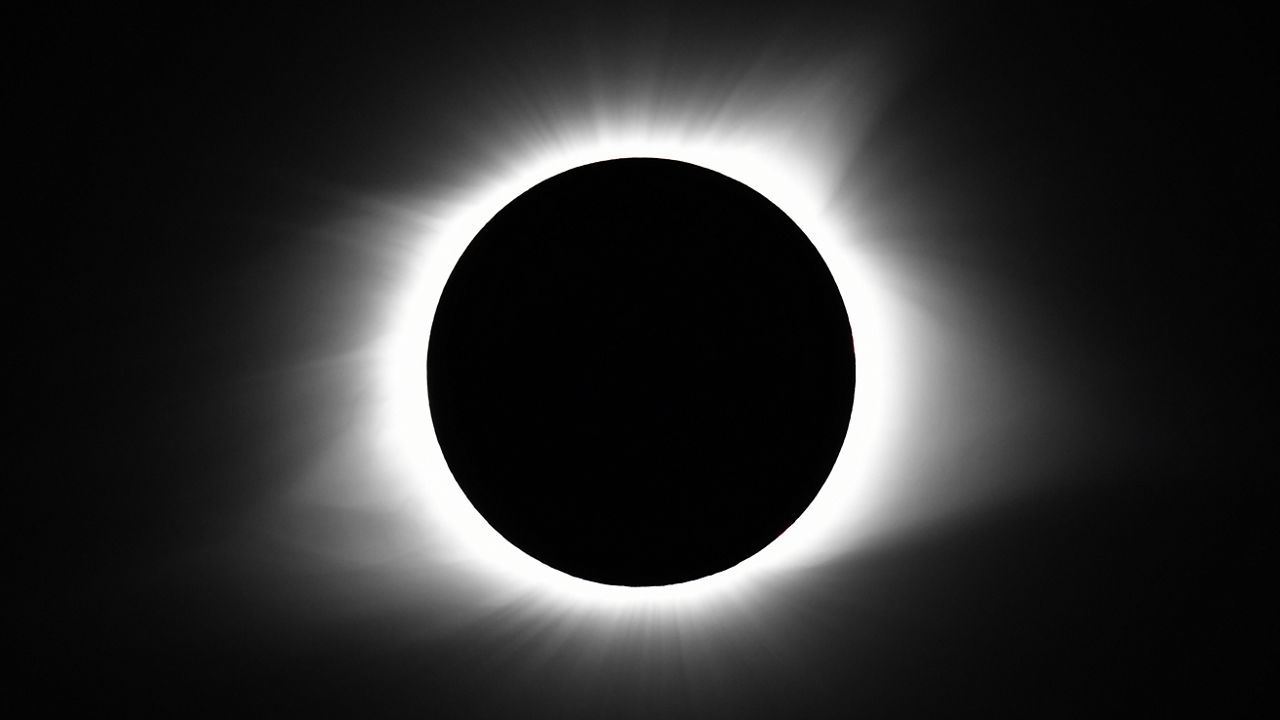New Yorkers and out-of-town visitors alike gathered across the city Monday afternoon to take in the partial solar eclipse.
Watch parties were held at sites throughout the five boroughs, including at the American Museum of Natural History. The eclipse was first visible in New York City at around 2:20 p.m. The peak of the eclipse was around 3:20 p.m.
What You Need To Know
- New York City experienced a partial solar eclipse on Monday, April 8 from around 2 p.m. until 4 p.m.
- The eclipse was first visible for the city at around 2:20 p.m.
- The peak of the eclipse was at around 3:20 p.m.
- The next time the U.S. will have front-row seats for an eclipse is 2044
Debbi and Jordan Schapiro, who are originally from New York City, told NY1 they traveled from Florida to take in the partial eclipse at the museum. The museum said thousands of New Yorkers flocked to the cultural institution for the event.
“Well, we thought it would be no better place than New York City to see the eclipse, and at the museum,” Debbi Schapiro said. “Just being in a sense of community with everybody here, and sharing this wonderful experience, and really having the opportunity to see the eclipse so well with the glasses and everything.”
Jordan Schapiro called the experience “phenomenal.”
“I mean, it was really, the excitement, the energy, it was incredible, and being at the museum. It was just, it was amazing. Fantastic,” he said. “I’ve been to a Super Bowl. I’ve been to a World Series. And this was up there."
Another solar eclipse event was held at the William G. Wilcox School on Staten Island. At the viewing party, students stood outside and used eclipse glasses to view the cosmic sight.
Students told NY1 that looking at the eclipse was "very cool," and said the experience lived up to their expectations.
Mayor Eric Adams put on eclipse glasses and viewed the rare phenomenon at a senior development on the Lower East Side.
“No matter how much darkness will come, light will shine through and the sun is going to come back out,” Adams said.
Jackie Faherty, an astrophysicist at the American Museum of Natural History, spoke with NY1 Monday morning about how to view the eclipse properly.
“Find yourself a location, a spot where clouds aren’t blocking the sun. It can be anywhere. New York City is a little tricky because we have a lot of tall buildings, so you need to go somewhere where you can actually get a view of the sky,” Faherty said.
And while the city only got a partial solar eclipse — around 90% of the sun was blocked by the moon — Faherty said people should wear certified eclipse glasses when viewing the astronomical event.
“Your retina actually doesn’t have pain receptors, so you can’t even tell you’re doing damage to your eyes, so don’t look directly at the sun without protection,” Faherty said.
In the leadup to the big event, New Yorkers who spoke with NY1 said they would be watching, and they were taking that advice seriously.
“I told my son that I think it’s supposed to happen between 3:15 and 3:30, so I told him that, just ask his teacher if they can go up. They have a rooftop deck at their school, go up to the top, as long as you have your glasses,” said Lisa Chibis-Tapper.
“The coolest part to me is just that you’re really seeing astronomy at work,” said Ryan Schrader.
Total solar eclipses happen roughly every 18 months somewhere on the planet — often over an ocean. The next time the U.S. will have front-row seats is in 2044.
“That’s why it’s so special,” Faherty said. “New York’s like, in it for this solar eclipse. We haven’t been in it in a really long time.”
New York City last experienced a partial solar eclipse in 2017. That time, the moon covered approximately 70% of the sun.








_PKG_CC_B_1)
